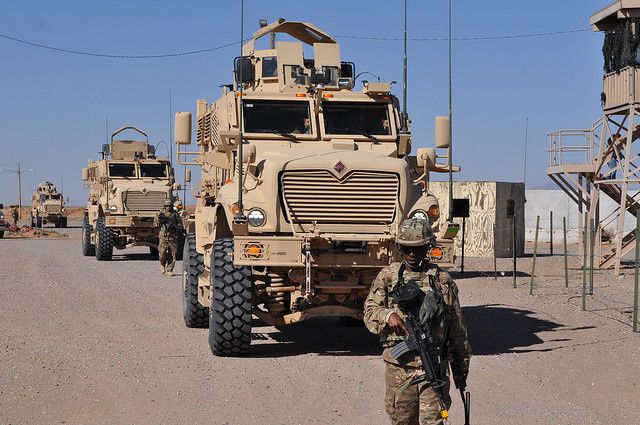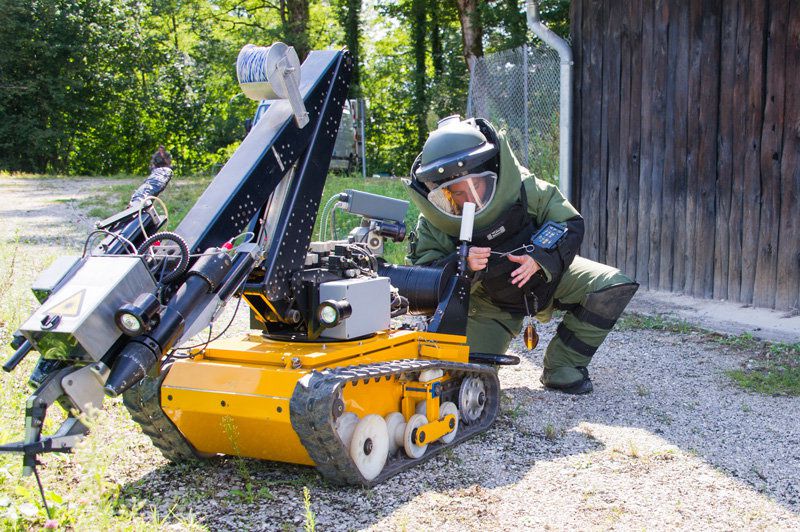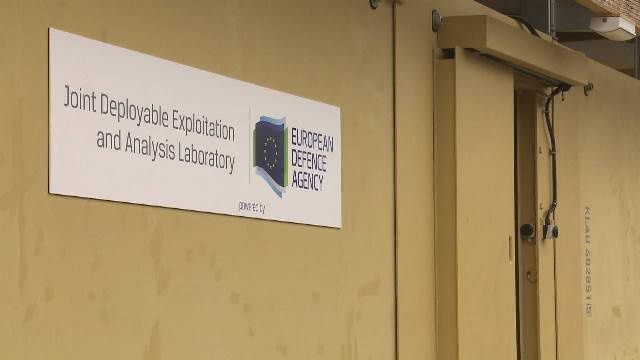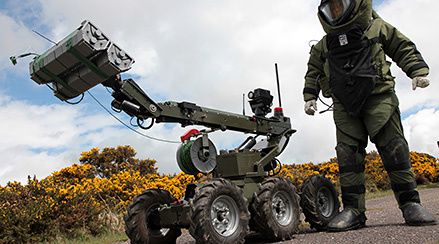07/01/2016 Sources : Ministère de la Défense/EMA
La lutte contre les engins explosifs improvisés (EEI ou IED en anglais) est partie intégrante de la protection des forces. Spécialité de l’armée de Terre, c’est à Angers que nos militaires sont formés à la lutte contre EEI. Afin d’affuter leurs connaissances techniques dans la lutte contre EEI, un laboratoire d’expertise français a été créé il y a un an. Déployé pour la première fois en opération extérieure en novembre et décembre 2015, il permet aux terriens du génie d’apporter leur expertise à la force Barkhane.
Le laboratoire CIEL, Counter-IED Exploitation Laboratory ou laboratoire d’exploitation contre les engins explosifs improvisés, est né de l’expérience européenne en Afghanistan. Composé de quatre spécialistes, équipé d’un matériel d’analyse de haute technologie, léger et transportable, il est conçu pour être déployé très rapidement en cas de besoin sur un théâtre d’opération extérieure. Partie intégrante de la protection de la force, la lutte contre les EEI est destinée à garantir et préserver la liberté de mouvement et de manœuvre des troupes sur le terrain.
Cette lutte regroupe l’ensemble des activités de nature offensive et défensive menées par les forces pour prévenir cette menace, la traiter et réduire ses effets. Déployé au Mali pendant deux mois, ce laboratoire a pu exploiter les éléments collectés par les équipes du génie de l’armée de Terre récemment engagées dans la vallée des Ifoghas, zone particulièrement concernée par la présence de mines et d’engins explosifs improvisés. Chaque militaire spécialiste réalise une recherche dans son domaine d’expertise : chimie, électronique, technique d’investigation criminelle et déminage. Les éléments explosifs en particulier sont ainsi analysés afin de récolter de précieux indices sur leur origine et leur nature. Selon l’ONU, pour la seule année 2015, pas moins d’une centaine d’incidents mines et engins explosifs improvisés ont été enregistrés au Mali. Après huit semaines de recherches sur une trentaine de cas, qui ont donné lieu à plus de cent cinquante analyses, le laboratoire CIEL a accumulé des renseignements précieux, partagés avec les forces de sécurité maliennes et la MINUSMA, afin de progresser ensemble dans la lutte contre le terrorisme.
L’opération Barkhane compte 3 500 militaires dont la mission, en partenariat avec les pays du G5 Sahel, consiste à lutter contre les groupes armés terroristes pouvant agir dans la bande sahélo-saharienne.
commenter cet article …















/image%2F0547456%2F20150302%2Fob_0ea101_2014mbst243-001-001.jpg)
/image%2F0547456%2F20150302%2Fob_f3b716_2014mbst243-001-002.jpg)
/image%2F0547456%2F20150302%2Fob_1f0711_2014mbst243-001-003.jpg)
















![[Lutte contre-IED] L’attaque des réseaux [Lutte contre-IED] L’attaque des réseaux](http://www.defense.gouv.fr/var/dicod/storage/images/base-de-medias/images/terre/terre-images/images-articles/lutte-contre-ied-l-attaque-des-reseaux/2035244-1-fre-FR/lutte-contre-ied-l-attaque-des-reseaux_vignette_actu.jpg)



/image%2F0547456%2F201310%2Fob_427f6abf6dfa0e92a4dac3f9ea0ff251_2013tkaia239-037-052.jpg)
/image%2F0547456%2F201310%2Fob_af98e8535519731e62be7b64cf5bea7d_2013tkaia239-034-052.jpg)
/image%2F0547456%2F201310%2Fob_704c8a3783391c0c996be975b15a3943_2013tkaia239-035-052.jpg)









